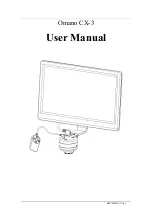
TE-BA-e-2020
3
1.
Introduction
1.1 General description
This coating thickness gauge is small, light and handy. Although it has complex and
advanced equipment, it is convenient and easy to use.
Its robustness allows it to be used for many years, provided that all instructions in this
manual are carefully followed.
Therefore please keep them always within reach!
Note: It is strongly recommended to adjust the new meter before first use, as
described in chapter 6. This will result in a higher measurement accuracy from
the beginning.
2.
Functions
"This device complies with ISO 2178 and ISO 2361, as well as DIN, ASTM and BS
standards. This means that it can be used both under laboratory conditions and under
rough environmental conditions "in the field".
"The F probe is used to determine the thickness of non-magnetic layers, e.g. paint,
plastic, enamelled porcelain, copper, zinc, aluminium, chrome, lacquer layers, etc.
These layers should be on magnetic metals such as steel, iron, nickel etc. This test
method is often used to measure the thickness of galvanised layers, lacquer layers,
enamelled porcelain layers, phosphorescent layers, copper plates, aluminium plates,
alloys, etc.
"The N- measuring probe is used to determine the thickness of non-magnetic and
insulating layers on non-magnetic metals.
It is used to measure anodizations, lacquer layers, glazes, colours, enamel, plastic
layers, powder coating etc. These should be on non-magnetic substrates such as
aluminium, sheet metal, non-magnetic stainless steel and others.
"Automatic recognition of the carrier material
"Manual or automatic switch-off to conserve battery power.
"Two measurement modes: -single and continuous
"Conversion of units metric/imperia
"Wide measuring range and high resolution
"The backlit display allows accurate reading
" Can be connected to a PC for data transfer via RS 232 interface for statistical
purposes. Cable and software are available as optional accessories (ATC-01).
3.
Technical data
TE 1250-0.1F
TE 1250-0.1FN TE 1250-0.1N
Display
4 digits, 10mm LCD display with backlight
Measuring range
0 to 1250
μm / 0 to 50 mil (standard)
Resolution
0,1 µm (0 to 99,9 µm), 1 µm (over 100)



























